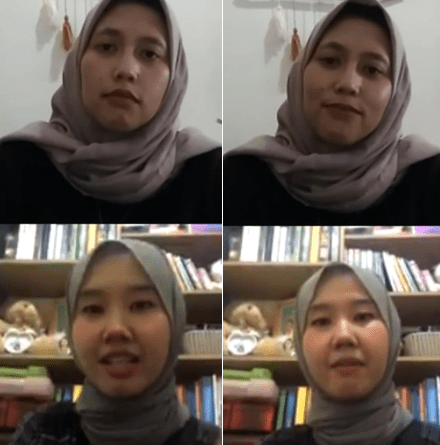
Yogyakarta, June 18th 2020 – Since the stay at home policy were applied, people have much more time to spend on their social media. Unfortunately, the increasing intensity of social media use were also followed by the intensity of cyberbullying. Talking about bullying, it happened since long ago in a traditional way, it was done directly. And this bullying happened in everywhere, even in the campus area. To talk about it in a deeper way through the psychological perspective, Career Development Center (CDC) Fisipol UGM brought this issue in the psychoeducation live session.
This psychoeducation live session which titled as ‘Bullying’ presented Reni Apriliawati, M.Psi, as the psychologist of CDC Fisipol UGM. This event was moderated by Alfira, the officer of CDC. This live session began at 01.00 p.m. As the opening, Alfira told the audience that she had made a small survey on her Instagram account. The survey aimed to listen to the other people stories about bullying that ever happened to them, or was seen by them, or even had done by them. Alfira got various responses. But, before discussing about those stories, Alfira asked Reni to explain about what is bullying and the limitation of it first.
There were three aspects that should be concerned about if we want to identify an action as a bullying or not. First, bullying is a negative action. It means, bullying was aimed to hurt someone else. Second, an action could be categorized as bullying if it had done continuously and repeatedly, so it could make the victim feels distress. Third, bullying was done by an individual that has a bigger power. This third aspect was the one that differentiates bullying with aggressivity. Aggressivity happened when the two parties had the same power and got into a fight. But bullying is about the gap of power between them.
Bullying itself categorized in two: direct bullying or traditional bullying and cyberbullying. In both of these categories, there are several forms of bullying, such as verbal and relational. Relational bullying usually was done unconsciously and indirectly. The forms of relational bullying were such as threatening facial expressions or gestures, exclusion, and act of alienating someone. In the direct bullying also happened several acts that could hurt the body of the victim, such as hitting, kicking, and slapping.
One thing that usually be forgotten in the bullying case is the role of witness in the bullying case. Reni explained, there were four categories of witness in the bullying case. The first was assistant witness, or the people that used to help to bully someone. The second was the reinforcer, they did not bully the victim but they laughed at the victim. If it was illustrated, the reinforcer witness was the one who also made the situation became worse. Three, there was the outsider witness, the witness who just stayed silent even if they have seen the bullying case. This one kind of witness allowed bullying to continue to happen because they did not speak up about it. Those three kinds of witness allowed bullying continue to happens because they did not make any efforts to stop the bullying chain. The witness who tried to help the victim was the defender.
Then, Reni gave some tips to become the defender witness. In the direct bullying case, the defender witness could do the assertive and simple communication. Then they could bring the victim to a secure place and listened to their stories. If the bullying was on the severe level, the defender witness could help to report it to the authorized parties. Meanwhile for the cyberbullying, thing that could be done by the defender witness was looking for the proofs, then they could help to block or report the account of the bullies. Keep in mind not to be busy commenting, because it could trigger other people to commenting as well.
Bullying also gave a serious impact for the victims. Bullying could bury someone else’s self confidence, it could make them feel anxiety, insecure, and fear. In the long run, bullying could disturb certain activities in certain environments. The worse effects, bullying could make someone depressed and make them want to end their lives. The victims also in the risk for being the bullies in the future. Because of that, Reni gave some tips to the bullying victims, either to respond the bullying acts or to heal themselves from the traumas.
The first thing that could be done in responding the bullying acts was looking for support system. Other than that, when the bullying happened, gave your best to not do something aggressive such as angry and yelling. Aggressive responses could make the bullies satisfied and make them became more aggressive. But, the victims should not praise and say sorry to the bullies. This is the same as allowing the bullies to do the bully. Things that should have been done is reject them through simple and unemotional communication, while showing a confidence gesture like look into the eyes of the bullies. The victim could also report this. If the victim disturbed by the effects of bullying, it is better to seek a professional help to heal from the bullying effects.
When Reni explained about bullying, Alfira sometimes talked about her experience. Alfira also gave examples that she got from the small survey that she made. The explanation of this topic also interspersed with the question and answer session from the audience that were answered by Reni. This live session was ended at 02.10 p.m. Two videos of this ‘Bullying’ live session could be watched on the IGTV of CDC Fisipol UGM.
